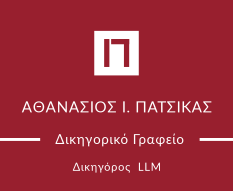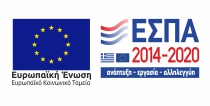The IMF and Greece. Legal aspects of financial assistance 2010-2017
Ημερομηνία δημοσίευσης: 07/04/2019 6:15 μμ.Written by Athanasios I. Patsikas
Lawyer (LLM)
Prior to the debt crisis of the early 1980s, the IMF's role in developing countries focused on providing temporary infusions of capital to alleviate problems with inflation, budget deficits, or balance of payments[1]. After the debt crisis, however, lenders and policymakers in the developed world became convinced that the economies of developing countries required far-reaching structural reforms to remedy their underlying problems[2]. The IMF has reinvented itself on several occasions and in different dimensions since its creation approximately 70 years ago[3]. Under the Bretton Woods system, the IMF oversaw a network of mutually pegged exchange[4]. Because exchange rate misalignments and corresponding balance-of-payments problems were a frequent and recurrent preoccupation among the IMF member- ship, the so-called Stand-By Arrangements of the earlier era involved short-term lending to deal with temporary (illiquidity) problems[5]. This mandate is laid out in section I (v) of the Articles of Agreement of the IMF, which reads: "To give confidence to members by making the general resources of the Fund temporarily available to them under adequate safeguards, thus providing them with opportunity to correct maladjustments in their balance of payments without resorting to measures destructive of national or international prosperity." From this perspective, the IMF was not intended to function as a development agency engaged in long-term lending as this was a role assigned to the World Bank and various regional development agencies, nor was it an institution to lend into situations of sovereign insolvency but its intended mandate was to act as the international lender of last resort[6]. It was during February–March 2010, when it became increasingly clear that private financial markets would not provide the Greek government with the requisite funds on acceptable terms and consequently official financial resources would therefore be needed to prevent a default by Greece, which had large repayments coming due beginning in May 2010[7]. The Europeans debated whether to have the IMF involved in Greece and, if so, how. According to Bastasin and senior euro area officials who were interviewed by the IEO, the German and some other euro-area governments wanted the IMF to be directly involved in any European lending operation to Greece, desiring to benefit from the Fund’s technical expertise and experience in crisis management[8]. As a consequence, the Greek sovereign debt crisis situation was fed with several packages of financial assistance based on the contribution of European Union Member States and that of the IMF. This dual dimensioned contribution has come through the filter of legality in relation with each contributor’s mandate, the case being that from the perspective of legal certainty, the whole attempt appears to be a very controversial issue.
Accordingly, since 2010, Greece has been granted the following packages of financial assistance by the Member States and the International Monetary Fund (‘IMF’):
A) 1st Program of financial Assistance, 110 billion euros (2010-2013)
Despite the fact that the “No Bail Out” clause of the Treaty of the Functioning of the European Union (Art. 125) is a red alert for monetary policy of the Eurosystem, the instrumentation put through to provide loan facility to Greece was based legally on bilateral intergovernmental loans between Greece and each Member State, not under the auspices of the EU, but on the basis of the rules of International (Private) Financial law. European Union’s ratio contribution in the above way elevated to 80 billion Euros (72, 7%).
The IMF’s participation in the above rescue package was agreed to 30 billion Euros. The legal instrument through which the installments were disbursed was the Stand-By Arrangement, permitting exceptional access to IMF resources, amounting to more than 3,200 percent of Greece’s quota, and was approved under the Fund's fast-track Emergency Financing Mechanism procedures[9]. Greece, which became member of the IMF on December 27, 1945, has an IMF quota of Special Drawing Rights 823.0 million[10]. A state can usually foresee that it will face illiquidity problems in the future so the IMF will have a loan agreement available in advance.Stand-by arrangements are not technically or legally loans, but purchase and repurchase arrangements with the functional equivalence of a loan, so that purchases (drawings) have to be reversed by repurchases (or repayments)[11]. A SBA goes hand in hand with strict conditionality for the beneficiary State in order for the money lending to follow, as the IMF will provide a roadmap of reforms to be materialized. Conditionality represents the essence of the “adequate safeguards” of Fund Resources prescribed in Article 1(v) of the Articles of Agreement: “To give confidence to members by making the general resources of the Fund temporarily available to them under adequate safeguards”. Banks require collateral in commercial lending and accordingly conditionality operates as a substitute for collateral in lending to sovereign borrowers[12].
In fact, though the program was supposed to restore and boost growth, improve Greece's debt sustainability and provide the basis for a return to market access and even though Greece was back then fully financed and a Memorandum of understanding was in place, the financial markets considered that the program would fail and became more skeptical, pushing the yields in Hellenic Republic bonds to go sky-rocketing. They started predicting the break-up of the Eurozone, not only because of Greece, but also because of Spain, Portugal and Italy, countries facing at the time similar debt problems The ironic outcome of this situation was that the IMF did itself infringed its own legal rules as far as the conditions to be involved in financing a State is concerned. Accordingly the IMF: 1) can only lend money to states, 2) the State must only face temporary illiquidity problems and must not be insolvent, 3) its debt must be sustainable, 4) IMF’s loan cannot be secured through collateral, because a state cannot offer collateral (ex. the Acropolis), 5) the debt towards the IMF (as a result of its loan) cannot undergo a haircut. If a haircut happened, then the board of the IMF would be criminally prosecuted, because the IMF is not a profit private institute and the money granted as loans consists of contributions of the States which participate in the Fund.
After the financial markets’ disapproval and their unwillingness to show confidence in Greece’s financial Stability Program the IMF found itself in the awkward situation to face the truth (pretending?) not to have seen earlier. The Greek debt was unsustainable[13]! The cornerstone prerequisite of IMF’s involvement was missing from the equation. Given this embarrassing momentum, the IMF, France and Germany as moving economic powers of the indirect bail-out mission entered a meditation period behind closed-doors meetings, finally agreeing on a creation of “a European IMF”, naming it European Financial Stability Facility and on a deep debt restructuring for Greece. On the other hand, the European Central Bank had to be persuaded, as it was a secondary market originated Greek bond holder. In the end, all the stakeholders (EU, IMF, ECB) reached to an agreement under the following conditions:
1. The ECB would not suffer any losses, meaning that Greek bonds held by the ECB would not suffer a haircut.
2. There would not be any negative consequences on the Greek banks, because the banking system always represents the vulnerability point which may lead to State’s bankruptcy.
3. Reaffirmation of all Member States that this would be an exceptional situation (as no such precedent had ever taken place in Securities market history) not to be repeated in the future in any country, and that the Maastricht Treaty provisions would remain valid.
4. The imposing of strict conditionality to Greece according to the 2nd Memorandum of Understanding that showed the path to the 2nd load agreement again with the participation of the IMF.
Initially (from March to September 2011), a small Private Sector Initiative was being discussed (21% haircut), but the IMF intervened and its reasoning was that a debt restructuring, regardless of the quantity, in a country which is a Member State of the Eurozone would itself cause great disarray in the euro and great frustration in the financial markets, so there is no point in making a small haircut, as comparatively the benefits would be too small and that Greece would eventually need a new haircut, the case being that if a debt restructuring is about to be orchestrated, the target would be to eliminate the cause rather than the symptom of the problem and to solve Greece’s problem once and for all with a “deep” initiative. So, in October 2011 the Staff teams from the IMF, EC, and ECB conclude their fifth review mission to Greece and note that: “The success of the program continues to depend on mobilizing adequate financing from private sector involvement (PSI) and the official sector.[14]”
The IMF has usually encouraged governments to add collective action clauses (CACs) to their sovereign bond contracts, allowing a qualified majority of holders of a sovereign bond issue, when they vote to accept a restructuring offer, to impose the same terms on the dissenting minority, clauses thereby seeking to reduce coordination, holdout, and litigation problems restructurings[15]. In parallel, given the absence of an international legal framework in the field of Debt restructuring, there has been enough conversation for a Sovereign Debt Restructuring Mechanism (SDRM) to be created, following an IMF proposal. The advantage of giving the above framework a statutory basis is that the collective action provisions that it would contain would effectively override the restructuring and enforcement terms set forth in the underlying agreements, as is the case with the collective action provisions contained in domestic insolvency laws[16]. Finally, the establishment of a treaty facilitates the establishment of a single international judicial entity (possibly IMF) that would have exclusive jurisdiction over all disputes that would arise between the debtor and its domestic and international creditors and among such creditors. Such an entity would also have responsibility for the administration of a unified voting process, including the verification of all creditor claims[17]. As a matter of fact the IMF would have the powers of a binding arbitral tribunal - the international equivalent of a national bankruptcy court "cram down" restructuring terms on dissenting creditors although such a function has been debated[18].
The effectiveness of a SDRM treaty would be obvious if we examine the following case concerning the existence of legal certainty as far as the definition of the credit event is concerned:
Under the ISDA Credit Derivatives Definitions (“ISDA Definitions”), credit events triggering a sovereign CDS are: the failure to pay, moratorium, obligation acceleration, and restructuring, so, either a pre-default debt exchange or a default could trigger a credit event[19]. In general, the debt exchange must bind all the creditors, including those voting against the exchange, in order to be qualified as a “restructuring credit event”, the case being that as certain official measures taken during the Greek restructuring process were not covered by existing ISDA provisions for CDS contracts and in turn did not trigger a credit event, negative contingencies to investors were increased and consequently the credibility of the sovereign CDS market was undermined[20]. These measures included: 1) the removal of old Greek Government Bonds ahead of the CDS auction; 2) the arbitrary change of the covenants of Greek Government Bonds under domestic governing law to subject these bonds to a collective action procedure; and 3) the “persuasion” of certain (domestic) investors to accept large haircuts under a “voluntary” PSI agreement[21].
B) 2nd Program of financial Assistance, 130 billion euros (2012-2015)
On 14 March 2012, euro area finance ministers approved financing of the second economic adjustment program for Greece. The euro area Member States and the IMF committed the undisbursed amounts of the first program plus an additional EUR 130 000 million for the years 2012-2014 (later prolonged until 2015)[22]. The IMF committed to contribute €19.8 billion after the Private Sector Initiative for Debt Restructuring happened according to its orchestration. The IMF’s contribution is part of a 4-year €28 billion arrangement under the extended fund facility for Greece that the IMF approved in March 2012[23]. Borrowing under the EFF is subject to the normal limit of up to 145 percent of a country’s IMF quota annually and a cumulative limit over the life of the program of 435 percent of quota, net of scheduled repayments but The Fund may lend amounts above these normal access limits on a case-by-case basis in exceptional circumstances provided that the country satisfies a predetermined set of exceptional access criteria[24].
To obtain exceptional access under the rules prevalent at the time of the first Greek program, four criteria had to be met[25]: 1) The country is under exceptional balance-of-payments pressure exceeding the normal limits, 2) A debt sustainability analysis indicates a high probability that the debt will remain sustainable. If the debt sustainability analysis cannot conclude this with high probability, exceptional access may be granted on grounds of systemic concerns (a "systemic exemption"), 3) The country has good chances of regaining access to private markets before the bailout ends, 4) The country has a policy program convincingly promising success, as well as the institutional quality to implement the program.
Whereas the financing of the first program was based on bilateral loans, it was agreed that — on the side of euro area Member States — the second program would be financed by the European Financial Stability Facility (‘EFSF’), (later ESM), which had been fully operational since August 2010and, the IMF’s share in the total financing package for the second arrangement with Greece (March 2012) fell to 16%[26]. After the inglorious IMF’s 1st almost blind intervention into the Greek financial package from the one side and the success of the PSI for the restructuring of the Greek debt (53, 5% nominal value) from the other side, the IMF tried again in 2013-14 to enunciate a rule for debt restructuring, the case being that instead of placing countries into two groups - those whose debts were sustainable with high probability and those that were not - there would now be a third group made up of countries whose debts might be sustainable but not of high probability, so accordingly the Fund announced that it would only grant exceptional access to countries in the "unsustainable" category if they first engaged in an up-front debt restructuring[27]. In contrast, countries in the new intermediate category might qualify for funding only if the government undertook a "soft re-profiling" of its debt, which meant a bond exchange that involved an extension of debt maturities without reduction of principal and interest, so in conjunction with this change, the systemic exemption would be eliminated[28].
C) 3rd Program of financial Assistance, 86 billion euros (2015-2018)
On 8 July 2015, in view of the ongoing severe economic and financial disturbance, the Greek authorities requested financial assistance from the European Stability Mechanism (‘ESM’) in order to ensure a properly- functioning Greek banking system, to meet Greece's debt obligations, to support the return of Greece's economy to sustainable growth and safeguard financial stability of the euro area and of its Member States, so in compliance with Article 13 of the ESM Treaty, the European Commission, in liaison with the ECB, and with input from IMF staff concluded that conditions for the financial support for Greece, to be provided in the form of an ESM loan, are in place[29]. Hence, on August 19, 2015, the ESM Board approved a new Memorandum of Understanding with Greece and a new three-year loan (for up to €86.0 billion), following its endorsement by ESM members according to their national procedures, the IMF not negotiating a corresponding Letter of Intention, or disburse resources[30].
Nor did the third European program with Greece (8/19/2015) have a concurrent request for a program with the IMF, but such a request was expected subsequently and as a result the EU MOU that was signed by the Greek authorities stated that the MOU was prepared in liaison with the ECB and with input from the IMF, the EU separately indicating that the IMF would take part in the regular review missions and was expected to participate financially later[31]. From the EU’s perspective, the IMF was a “partner in the ESM program as envisaged under the specific arrangements of the ESM Treaty.” The IMF mission chief to Greece confirmed in August 2015 that the IMF would “make an assessment of its participation once the steps on the authorities’ program and debt relief have been taken, expected at the time of the first review of the ESM program.[32]”
Conclusion-Criticism
More generally, the IMF's role in the Greek crisis has been widely criticized[33] , since the Fund has publicly acknowledged mistakes the most important of which not insisting on a Greek debt restructuring in 2010[34]. In that instance, the French and German governments were concerned that restructuring Greece's debt might adversely affect their banks, and they were powerful enough to get their way[35].The euro-zone crisis was the latest demand "shock" for IMF lending as, it had a major impact on the IMF's loan portfolio and the IMF's perception as a lender of last resort[36]. The crisis showed just how dangerous it is for a lender of last resort to agree to serial lending to a country with unsustainable debts, as lending into insolvency (especially in large member countries) endangers the IMF's most valuable asset: its seniority which is not written in law, but rather is a market convention[37].
The Greek loan was the largest in IMF history. Emerging markets that had been subject to the earlier exceptional access policy complained, not without reason, large shareholders in the Fund received preferential treatment[38]. Alternatively, the IMF could have financed a significantly smaller share of Greece’s financing gap, even to the point of avoiding the need to trigger the exceptional access policy[39].
What seems to be the case is that several States consider their representation by the IMF poor, as it depicts a high influence from small indebted countries, rather than a stigma of common policy. They oppose giving the IMF the autonomy to engage in "blunt truth-telling" because they doubt that what it tells will be equally truthful in all cases and they resist giving the Fund additional responsibility as the organizer of a sovereign debt restructuring mechanism, not falling upon it no choice but to proceed to governance reform that gives appropriate voice and weight in decision making to all members, so that the legitimacy and effectiveness of the institution is enhanced[40].
It is more than evident that the IMF will not take the risk to shoot again its legs, acting contra legem its own mandate unless a further debt restructuring is at stake for Greece. However the ECB will hardly accept something like this because it would be as if it confessed that Maastricht criteria are not met as far as Greece’s entrance into the Eurosystem is concerned, so it would have to deal with “raison d’ etre” issues of legality. The fund said in May 2016 that it's likely to provide some new financial assistance to the country later in the year, in conjunction with the latest European program[41] .Given the present debt debate pending till today, no other financial assistance has been given to Greece by the IMF, albeit various statements of future assistance keep emerging in the press.
[1] The Politics of Hard Choices: IMF Programs and Government Spending, Author(s): Irfan Nooruddin and Joel W. Simmons,Source: International Organization, Vol. 60, No. 4 (Autumn, 2006), pp. 1001-1033
[2] See Bird 2003; Crisp and Kelly 1999; Stone 2002; and Vreeland 2003.
[3] Excellent companion studies to this paper include Edwards (1989) and Bordo and James (2000). Together, they provide a concise picture of what the IMF does, which is also rich in historical
[4] The International Monetary Fund: 70 Years of Reinvention Author(s): Carmen M. Reinhart and Christoph Trebesch, Source: The Journal of Economic Perspectives, Vol. 30, No. 1 (Winter 2016), pp. 3-27
[5] The International Monetary Fund: 70 Years of Reinvention, Author(s): Carmen M. Reinhart and Christoph Trebesch Source: The Journal of Economic Perspectives, Vol. 30, No. 1 (Winter 2016), pp. 3-27
6 The IMF’s Role in the Euro Area Crisis: What are the Lessons from the IMF’s Participation in the Troika? G. Russell Kincai
[7]The IMF’s Role in the Euro Area Crisis: What are the Lessons from the IMF’s Participation in the Troika?, G. Russell Kincaid
[8] Bastasin, Carlo, 2012, Saving Europe: How National Politics Nearly Destroyed the Euro, Washington, DC: Brookings Institution Press.
[9] IMF PRESS RELEASE NO. 10/335
[10]Press Release: IMF Completes First Review Under Stand-By Arrangement with Greece and Approves €2.57 Billion Disbursement, September 10, 2010
[11] Sovereign Debt Management, Edited by Rosa M. Lastra, Lee Buchheit, p.410
[12]IMF Article of Agreement, Article V, section 4
[13] Article IV, Section I of the IMF Agreement
[14] THE IMF AND THE CRISES IN GREECE, IRELAND, AND PORTUGAL: AN EVALUATION BY THE INDEPENDENT EVALUATION OFFICE, July 8, 2016
[15] The IMF's Unmet Challenges, Author(s): Barry Eichengreen and Ngaire Woods, Source: The Journal of Economic Perspectives, Vol. 30, No. 1 (Winter 2016), pp. 29-51, Published by: American Economic Association
[16]Anne O. Krueger, A New Approach To Sovereign Debt Restructuring International Monetary Fund 2002
[17]Anne O. Krueger, A New Approach To Sovereign Debt Restructuring International Monetary Fund 2002
[18]Stiglitz, Joseph E., and Martin Guzman. 2015. "A Rule of Law for Sovereign Debt." Project Syndicate , June 15. http://www. project-syndicate, org/commentary/sovereign-debt-restructuring-by :joseph-e-s tigli tz-and-martin-guzman-20 1, see also: Krueger, Anne O. 2002. "A New Approach to Sovereign Debt Restructuring," April. Washington, DC: IMF.
[19] SOVEREIGN DEBT RESTRUCTURING—RECENT DEVELOPMENTS AND IMPLICATIONS FOR THE FUND’S LEGAL AND POLICY FRAMEWORK, April 26, 2013
[20]SOVEREIGN DEBT RESTRUCTURING—RECENT DEVELOPMENTS AND IMPLICATIONS FOR THE FUND’S LEGAL AND POLICY FRAMEWORK, April 26, 2013
[21]SOVEREIGN DEBT RESTRUCTURING—RECENT DEVELOPMENTS AND IMPLICATIONS FOR THE FUND’S LEGAL AND POLICY FRAMEWORK, April 26, 2013
[22] Council Implementing Decision (EU) 2015/1411 of 19 August 2015 approving the macroeconomic adjustment programme of Greece, Official Journal L 219, 20/08/2015 p. 12
[23] EX-POST EVALUATION OF EXCEPTIONAL ACCESS UNDER THE 2012 EXTENDED ARRANGEMENT
[24]The IMF's Extended Fund Facility (EFF), September 27, 2016 http://www.imf.org/en/About/Factsheets/Sheets/2016/08/01/20/56/Extended-Fund-Facility
[25] IMF 2004, p. 4
[26] Council Implementing Decision (EU) 2015/1411 of 19 August 2015 approving the macroeconomic adjustment program of Greece, Official Journal L 219, 20/08/2015 p. 12
[27] The IMF's Unmet Challenges, Author(s): Barry Eichengreen and Ngaire Woods, Source: The Journal of Economic Perspectives, Vol. 30, No. 1 (Winter 2016), pp. 29-51, Published by: American Economic Association
[28] The IMF's Unmet Challenges, Author(s): Barry Eichengreen and Ngaire Woods, Source: The Journal of Economic Perspectives, Vol. 30, No. 1 (Winter 2016), pp. 29-51, Published by: American Economic Association, see also: IMF 2014a, see also: “Even with full implementation of these policies, Greece cannot grow out of its debt problem. European partners need to provide further debt relief, in addition to the generous relief provided thus far, to put Greece’s debt on a sustainable downward path”, Greece: Priorities for a Return to Sustainable Growth, February 7, 2017, https://www.imf.org/en/News/Articles/2017/02/07/NA020717Greece-Priorities-For-A-Return-To-Sustainable-Growth.
[29] Council Implementing Decision (EU) 2015/1411 of 19 August 2015 approving the macroeconomic adjustment programme of Greece, Official Journal L 219, 20/08/2015 p. 12
[30]Council Implementing Decision (EU) 2015/1411 of 19 August 2015 approving the macroeconomic adjustment programme of Greece, Official Journal L 219, 20/08/2015 p. 12
[31]The IMF’s Role in the Euro Area Crisis: What are the Lessons from the IMF’s Participation in the Troika? G. Russell Kincaid
[32] IMF Press Release 15/377
[33] Subramanian 2015; Mody 2015-Arvind. 2015. "How The IMF Failed Greece." Project Syndicate , August 1
[34] IMF 2013-International Monetary Fund (IMF). 2013. "Greece: Ex Post Evaluation of Exceptional Access under the 2010 Stand-By Arrangement." Country Report No. 13/156
[35] Orphanides, Athanasios. 2015. "The Euro Area Crisis Five Years After the Original Sin." MIT Sloan Research Paper no. 5147-15
[36] Moreno, Pablo. 2013. "The Metamorphosis of the IMF (2009-2011)." Bank of Spain Working Paper 78. See also: Schadler, Susan. 2014. "The IMF's Preferred Creditor Status: Does It Still Make Sense after the Euro Crisis?" CIGI Policy Brief 37
[37] The International Monetary Fund: 70 Years of Reinvention, Author(s): Carmen M. Reinhart and Christoph Trebesch, Source: The Journal of Economic Perspectives, Vol. 30, No. 1 (Winter 2016), pp. 3-27
[38] The IMF's Unmet Challenges, Author(s): Barry Eichengreen and Ngaire Woods, Source: The Journal of Economic Perspectives, Vol. 30, No. 1 (Winter 2016), pp. 29-51, Published by: American Economic Association
[39] The exceptional access policy was triggered in 17 of 23 (74 percent) of the General Resources Account arrangements outstanding at end-2009. Clearly, IMF-supported programs providing exceptional access were not unusual at that time. Nonetheless, the IMF would avoid triggering its exceptional access policy in the case of Cyprus (2013).
[40] The IMF's Unmet Challenges, Author(s): Barry Eichengreen and Ngaire Woods Source: The Journal of Economic Perspectives, Vol. 30, No. 1 (Winter 2016), pp. 29-51
[41] Irish Independent , July 29, 2016 Friday , Edition 1; National Edition, see also IMF COUNTRY FOCUS
Greece: Priorities for a Return to Sustainable Growth, February 7, 2017, https://www.imf.org/en/News/Articles/2017/02/07/NA020717Greece-Priorities-For-A-Return-To-Sustainable-Growth (last visited 17-4-2017)




